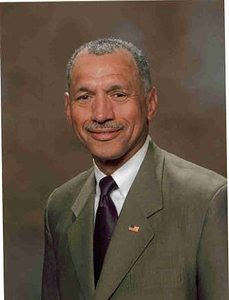
Charles Bolden, President Obama's nominee for NASA chief.
NASA’s immediate future will likely have an emphasis on Earth science, using the International Space Station for research and development, and making space exploration more of an entrepreneurial venture. Those were the main themes touched on during the Senate confirmation hearing of Charles Bolden, President Obama’s nominee for NASA chief.
When discussing space entrepreneurship, Bolden used the example of a friend who is using venture capital for research into a rocket engine that could take people to Mars in roughly 39 days. He also noted that government cannot fund everything that needs to be done in connection with space exploration and development.
Bolden was nominated for the position in May of 2009. A retired U.S. Marine Corps major general and former NASA astronaut who has flown on four shuttle missions, he also said that NASA needs to inspire a new generation to help replace an aging workforce.
“Floating in the windows of the Shuttle, speeding across its great desert at 4 – 5 miles per second, I saw the beauty of the Middle East, appearing peaceful and serene in spite of the Earthly reality of violence in the region,” said Bolden during his senate confirmation hearing. “From my window perch, I viewed with sadness the majestic Amazon Rain Forest, considered by many to be the model of serenity and peace, yet devastated by deforestation, leaving the area and its people facing some of the greatest environmental challenges of our day. l now dream of a day when any American can launch into the vastness of outer space and see the magnificence and grandeur of our home planet, Earth, as I have been blessed to do. I’m convinced this will inspire them to be more concerned for our environment and to strive to put an end to man’s inhumanity to man.”









